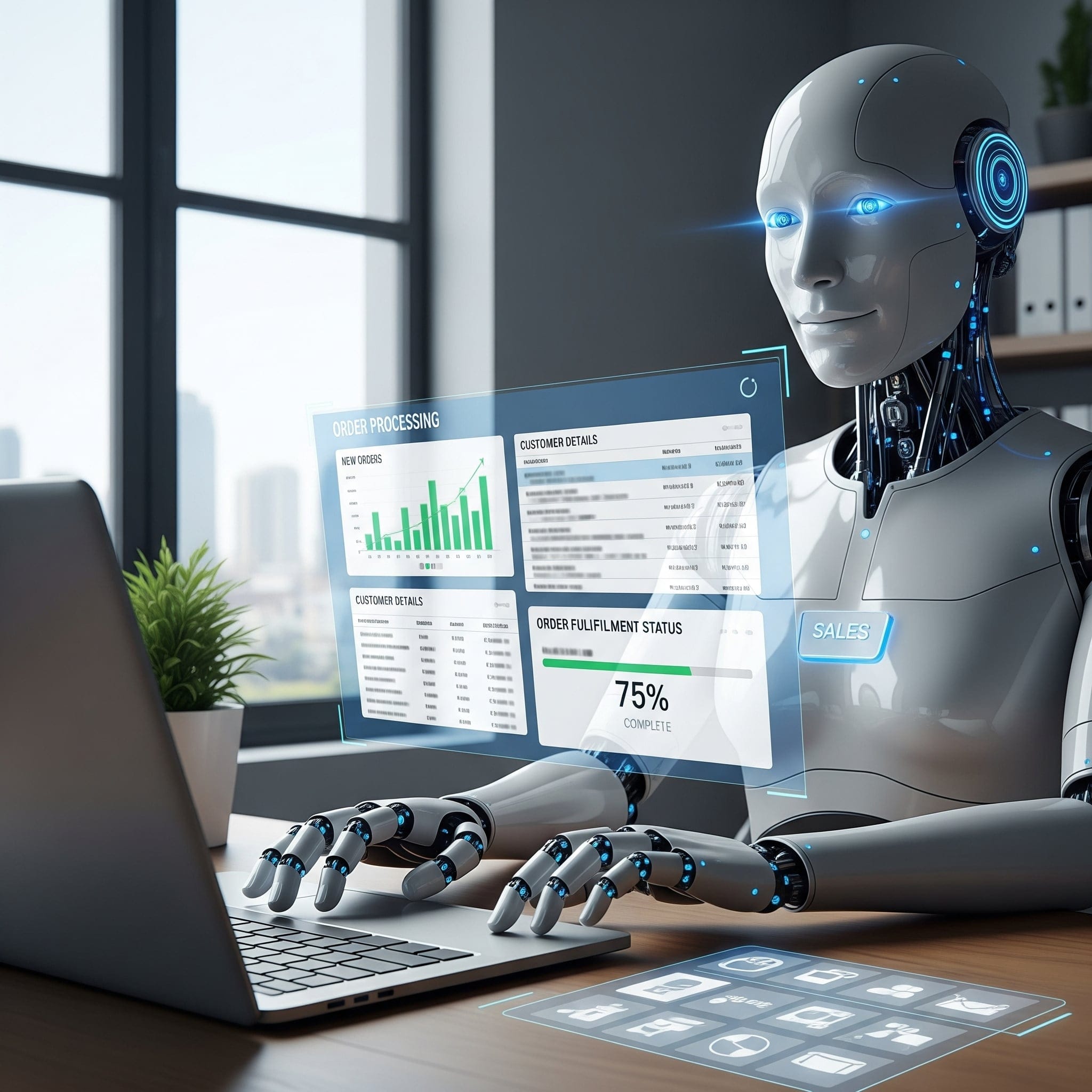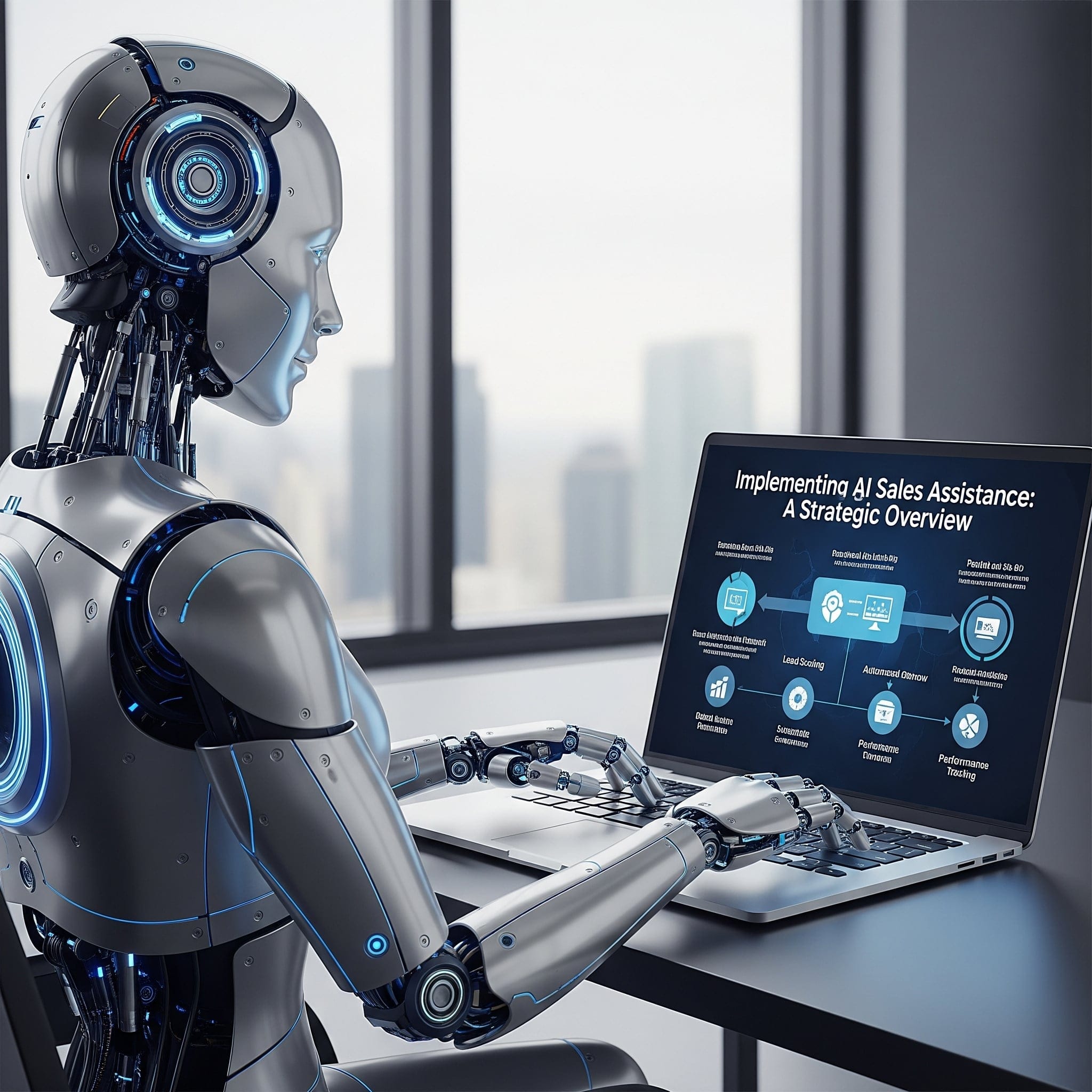“Discover how an AI Recruitment Assistant streamlines your hiring by automating candidate screening to find top talent faster, reducing bias, and improving overall process efficiency.”
The hiring manager’s desk is overflowing, not with paperwork but digital files. Hundreds of resumes, each a hopeful story, have poured in for a single open position. Somewhere in that digital mountain lies the perfect candidate. But finding them feels like searching for a needle in a haystack—a vast, time-consuming haystack. This scenario is all too familiar in the world of talent acquisition. Recruiters spend, on average, a significant portion of their day just sifting through applications, trying to separate the qualified from the hopeful. It’s a manual, often tedious process fraught with inconsistency and the potential for human error. But what if there was a better way?
Enter the AI Recruitment Assistant. This isn’t a far-off, futuristic concept; it’s a powerful technology actively reshaping the hiring landscape today. An AI Recruitment Assistant is a sophisticated software tool designed to automate the most repetitive and time-consuming parts of the recruitment cycle, especially the initial candidate screening phase. It acts as a tireless, data-driven partner to human recruiters, freeing them from administrative burdens and allowing them to focus on what they do best: connecting with people.
This article dives deep into the world of AI-powered recruitment. We will explore exactly how these intelligent systems streamline hiring by automating candidate screening. You’ll learn how they save countless hours, promote fairer hiring practices by reducing unconscious bias, and ultimately improve the quality of new hires through intelligent resume analysis and initial assessments. We’ll cover the real-world benefits you can expect, the challenges you might face when adopting this technology, and the best practices for integrating these powerful tools into your existing recruitment workflows.
Finally, we will look at the next evolution in this space with platforms like SalesCloser AI, which are pushing the boundaries of what an AI agent can do. From handling initial phone calls to automating scheduling, these all-in-one solutions are not just screening candidates; they are managing entire communication funnels for recruitment and sales, marking a new era of automation.
Chapter 1: The Old Way vs. The New Way – A Recruitment Revolution
For decades, the fundamental process of recruitment remained essentially unchanged. A job was posted, applications arrived, and a human (or a team of humans) would manually read through each one. While theoretically simple, this traditional approach is riddled with inefficiencies and challenges that have become magnified in the modern, fast-paced job market.
The Pain Points of Manual Screening
Let’s be honest: manual screening is a tough job. It’s a bottleneck that slows down the entire hiring pipeline.
First, it is incredibly time-consuming. Studies have shown that recruiters can spend up to a third of their workweek simply sourcing and screening candidates. For a popular role at a well-known company, this can mean manually reviewing thousands of applications. The sheer volume is overwhelming. Each resume requires focus and attention, and human stamina is finite. This leads directly to the second problem: high costs. Time is money, and the hours recruiters spend on manual screening contribute significantly to the overall cost-per-hire.
Furthermore, this process is susceptible to human error and inconsistency. A recruiter who is fresh and focused at 9 AM might screen resumes differently than they do at 4 PM after a long day. What one recruiter deems “essential experience,” another might overlook. This lack of standardization means great candidates can easily slip through the cracks due to simple oversight or fatigue.
Perhaps the most significant challenge of the old way is the unavoidable issue of unconscious bias. Humans are naturally wired with biases that can, without conscious intent, influence their decisions. A name that is difficult to pronounce, a graduation year that suggests an older age, a gap in a work history, or an address from a less affluent neighborhood can subconsciously affect a recruiter’s judgment. This can lead to a less diverse workforce and, more importantly, cause companies to miss out on exceptional talent that doesn’t fit a preconceived mold.
The Dawn of Recruitment Automation
Faced with these mounting pressures, the HR industry began to turn to technology for answers. The evolution started with simple Applicant Tracking Systems (ATS) that acted as digital filing cabinets. However, the fundamental transformation began with the integration of artificial intelligence. This shift marked the beginning of true recruitment automation.
An AI Recruitment Assistant is the engine of this new approach. It’s not about replacing recruiters. Instead, it’s about augmenting their abilities. Think of it as giving your recruitment team a set of superpowers. These tools handle the heavy lifting of data processing and initial filtering, operating 24/7 without fatigue or bias. They bring a level of hiring process efficiency that was previously unimaginable.
This move towards talent acquisition technology allows recruiters to transition from administrative gatekeepers to strategic talent advisors. When not buried in resumes, they can spend more time building relationships with top candidates, collaborating with hiring managers to understand role requirements deeply, and developing strategies to attract passive talent. The new way is about leveraging technology to make the hiring process more efficient, data-driven, and, ultimately, more human.
Chapter 2: How AI Recruitment Assistants Work Their Magic
How does an AI Recruitment Assistant perform this seemingly magical task of screening candidates? The process isn’t magic, but a sophisticated application of specific technologies designed to understand, categorize, and rank human language and experience. Let’s break down the core components that power these systems.
The Foundation: Resume Parsing Software
At the heart of most AI screening tools is resume parsing software. When you receive resumes in various formats—PDFs, Word documents, plain text emails—they are unstructured. Each one is laid out differently, using different fonts, headings, and styles. A human can read them, but a computer needs the information to be organized.
This is where parsing comes in. Using Natural Language Processing (NLP) technology, the software reads a resume like a human does. It identifies key pieces of information and extracts them into a structured, standardized format. It knows how to find:
- Contact Information: Name, email, phone number, LinkedIn profile.
- Work Experience: Company names, job titles, dates of employment, and responsibilities.
- Education: Schools, degrees, and graduation dates.
- Skills: It can identify both hard skills (like “Python,” “Java,” “AutoCAD”) and soft skills (like “leadership,” “communication”).
Once this data is extracted, it’s placed into a clean, searchable database. Suddenly, instead of a folder full of 500 unique files, you have a structured list of 500 candidates, where you can easily filter and search for specific criteria. This standardization is the crucial first step for any meaningful automation.
The Intelligence: Candidate Matching Algorithms
Once the data is structured, the real intelligence of AI-powered recruitment comes into play through candidate matching algorithms. This is where the system moves beyond simple keyword searching.
An old ATS might find every resume containing “marketing.” However, a sophisticated AI Recruitment Assistant understands context and semantics. Its matching algorithms are trained on vast amounts of data to understand the relationships between skills and roles. For example, the algorithm knows that a “Content Strategist” is highly related to “SEO,” “copywriting,” and “social media management,” even if the candidate’s resume doesn’t use those exact keywords in the job description.
The process typically works like this:
- Job Description Analysis: The AI first analyzes your job description to understand the core requirements, including necessary skills, years of experience, and educational background.
- Candidate Scoring: It then compares each parsed resume against these requirements. It doesn’t just check for presence; it scores the quality of the match. A candidate with ten years of experience in a required skill will score higher than one with two years. A candidate with a similar title at a direct competitor might get a boost.
- Ranking and Shortlisting: Finally, the system presents the recruiter with a ranked list of candidates. The most qualified individuals are at the top, complete with a match score (e.g., “95% match”) and a summary of why they are a good fit.
This allows recruiters to immediately focus on the top 5-10% of applicants, confident that the AI has already done the initial heavy lifting.
The Filter: Automated Initial Assessments
The final piece of the screening puzzle is handling the initial, repetitive questions that often determine basic eligibility. This is where automated candidate screening truly shines, often through AI-powered chatbots.
Instead of a recruiter having to email or call a candidate to ask knockout questions, a chatbot can handle it instantly after the application is submitted. This interaction can clarify things like:
- Work Authorization: “Are you legally authorized to work in this country?”
- Salary Expectations: “This role has a salary range of $70,000-$85,000. Does this align with your expectations?”
- Relocation: “This position is based in our Austin office and requires relocation. Are you willing to relocate?”
- Specific Certifications: “Do you hold a current PMP certification?”
If a candidate’s answers do not meet the baseline requirements, the system can politely inform them that they will not be moving forward at this time. This not only filters out unqualified applicants automatically but also provides a better candidate experience by giving them a quick and definitive answer, rather than leaving them waiting for weeks. These systems can even administer simple coding challenges or skills tests for technical roles, providing another layer of objective, data-driven screening.
Chapter 3: The Tangible Benefits of Automated Candidate Screening
Adopting an AI Recruitment Assistant isn’t just about getting new technology; it’s about achieving measurable business outcomes. The benefits ripple across the entire organization, from the HR department to the bottom line. Let’s explore the most significant advantages in detail.
Supercharging Hiring Process Efficiency
The most immediate and dramatic benefit is a massive boost in speed. Manual screening is a notorious bottleneck. With an AI Recruitment Assistant, the time it takes from a large applicant pool to a qualified shortlist can be reduced from weeks to hours, sometimes minutes. The AI can screen thousands of resumes when it takes a human to screen a dozen.
This acceleration has a domino effect on optimizing the entire recruitment workflow. A faster screening process means:
- Reduced Time-to-Hire: You can fill open positions faster, minimizing the productivity loss associated with a vacant role.
- Competitive Advantage: In a tight labor market, the best candidates are often off the market in just 10 days. Speed allows you to engage top talent before your competitors do.
- Empowered Recruiters: By automating 80% of administrative work, you free up your recruiters to focus on the 20% that is strategic. They can spend valuable time conducting meaningful interviews, building talent pipelines for future roles, and acting as true partners to hiring managers. This leads to higher job satisfaction and retention within your talent acquisition team.
A Commitment to Fairer Hiring: Bias Reduction in Hiring
One of the most profound benefits of using AI hiring tools is their potential to create a more equitable and diverse hiring process. While no system is perfect, a well-designed AI can significantly reduce bias in hiring.
Human recruiters, despite their best intentions, are susceptible to unconscious biases. These can be based on a candidate’s name, gender, age, alma mater, or even gaps in their employment history. An AI, on the other hand, can be programmed to ignore this demographic information entirely. It can be configured to “blind” the resume, focusing solely on the objective qualifications: skills, experience, and competencies relevant to the job.
By standardizing the initial screening process, the AI ensures that applicants are evaluated against the same criteria. The candidate who applied at midnight on a Sunday is assessed with the same rigor as the one who applied on Monday morning. This data-driven approach levels the playing field, giving every candidate a fair shot based on merit alone. This helps companies build more diverse and innovative teams and strengthens their employer brand by demonstrating a genuine commitment to fair hiring practices.
Improving the Quality of Hire
Faster and fairer hiring is excellent, but it’s all for naught if the quality of the people you hire doesn’t improve. Fortunately, AI-powered recruitment directly impacts this crucial metric.
Because an AI can analyze 100% of the applicant pool without fatigue, it uncovers hidden gems that a human recruiter might have missed while rushing to meet a deadline. It can identify candidates with transferable skills from different industries that a human might have overlooked. The candidate matching algorithms are often more sophisticated than a human’s “gut feeling,” leading to matches that are not just good on paper but are a better long-term fit for the role and the company culture.
The interview process becomes more productive by presenting hiring managers with a smaller, highly qualified pool of candidates. Instead of interviewing mediocre candidates, managers spend their time with top contenders, leading to better hiring decisions. Over time, this consistent focus on quality of hire leads to higher employee performance, lower turnover rates, and a stronger overall workforce.
Enhancing the Candidate Experience
In today’s competitive market, a positive candidate experience is non-negotiable. A poor experience can damage your employer’s brand and deter future applicants. AI recruitment assistants play a vital role in improving this journey.
Job seekers’ first complaint is the “black hole” of applying—sending a resume and never hearing back. AI-powered chatbots can provide instant acknowledgment that an application has been received. They can answer common questions about the company or the application process 24/7, providing support outside regular business hours.
Furthermore, by speeding up the screening process, AI allows you to respond to all successful and unsuccessful candidates much faster. A prompt and polite rejection is far better than silence. This level of communication and engagement shows respect for the candidate’s time and effort, leaving them with a positive impression of your company, even if they don’t get the job. A good experience can turn a rejected applicant into a future customer or encourage them to apply for another role.
Chapter 4: Overcoming the Hurdles: Challenges and Best Practices
While the benefits of AI Recruitment Assistants are compelling, the path to successful implementation is not without its challenges. Understanding these potential hurdles and adopting best practices from the start is key to unlocking the full potential of this technology and ensuring a smooth recruitment workflow optimization.
Common Challenges to Anticipate
Adopting any new technology requires careful planning. Here are some of the common challenges organizations face when integrating AI into their hiring process:
- Integration Complexity: Your new AI tool needs to talk to your existing systems, primarily your Applicant Tracking System (ATS). Ensuring seamless data flow between the two can be technically challenging and may require vendor support.
- The Risk of Algorithmic Bias: This is a critical concern. If an AI is trained on your company’s historical hiring data, and that data reflects past biased decisions, the AI will learn and perpetuate those same biases. For example, if historically, mostly men were hired for a specific role, the AI might learn to favor male candidates. It is crucial to address this head-on.
- Data Privacy and Security: Recruitment involves handling a vast amount of sensitive personal data. You must ensure your AI vendor complies with all relevant data protection regulations, such as GDPR in Europe or CCPA in California.
- Cost and ROI Justification: These systems represent a financial investment. Building a clear business case that outlines the expected return on investment (ROI) through time savings, reduced cost-per-hire, and improved quality of hire is essential for getting executive buy-in.
- Change Management and Team Adoption: The biggest hurdle is human. Recruiters may be skeptical of the technology, fearing it will replace their jobs or that they can’t make nuanced decisions. Getting the team to trust and effectively use the new tool is paramount.
Best Practices for a Smooth Integration
Navigating these challenges is entirely possible with a thoughtful and strategic approach. Here are some best practices for integrating an AI Recruitment Assistant successfully:
- Start Small with a Pilot Program: Don’t try to overhaul your entire recruitment process overnight. Select one or two specific roles or a single department to pilot the AI tool. This allows you to learn, work out the kinks, and demonstrate success on a smaller scale before a full rollout.
- Choose Your Vendor Wisely: Not all AI hiring tools are created equal—partner with a transparent vendor about how their algorithms work. Ask them tough questions about how they mitigate bias. Look for a partner that offers strong customer support and training.
- Prioritize Training and Onboarding: Invest time training your recruitment team on using the tool and why it’s being implemented. Frame it as a way to empower them, not replace them. Show them how it will free them to do more strategic, high-value work.
- Actively Audit for Bias: The work doesn’t stop after implementation. Regularly audit the AI’s performance. Analyze the results to ensure it is not disproportionately favoring or rejecting any particular demographic group. A good vendor should provide you with the analytics tools to do this.
- Keep the Human in the Loop: Emphasize that the AI is a decision-support tool, not the final decision-maker. The AI provides a data-driven shortlist, but the final judgment, the cultural fit assessment, and the relationship-building must always remain in the hands of human recruiters. This human oversight is the best safeguard against errors and ensures a personal touch remains in the hiring process.
By proactively addressing these challenges and following these best practices, you can ensure that your journey into AI-powered recruitment is successful, transforming your talent acquisition function into a strategic powerhouse.
Chapter 5: The Future is Now: Introducing SalesCloser AI
While many AI hiring tools have solved the top-of-funnel problem of screening and sorting resumes, a new generation of platforms is emerging that addresses the entire communication workflow. They understand that recruitment, much like sales, is a funnel that requires consistent, personalized, and timely engagement at every step. This is where a revolutionary platform like SalesCloser AI enters the picture.
SalesCloser AI is not just another resume parsing software or screening tool. It is an advanced AI Agent platform that handles complex, interactive communication, making it a game-changer for sales and recruitment automation. While its name highlights its prowess in sales, its powerful capabilities are ideally suited to create a truly end-to-end automated recruitment experience.
Let’s look at how SalesCloser AI’s features translate into the world of talent acquisition:
Advanced Capabilities for Modern Recruitment
- Handling Phone and Video Calls: This is a monumental leap forward. Imagine an AI agent that can conduct the initial 15-minute screening call. The SalesCloser AI can be programmed with structured questions to ask every candidate, from verifying their experience to behavioral questions. It can record the answers and provide transcripts and summaries for the human recruiter to review. This ensures every candidate gets a consistent initial interview experience and saves recruiters dozens of hours of repetitive phone calls.
- Automated Scheduling and Follow-ups: One of the most significant administrative headaches in recruitment is the back-and-forth of scheduling interviews. SalesCloser AI can integrate with calendars, find mutually available times, and automatically schedule interviews with the hiring team. It can also send automated follow-up emails and reminders to candidates, ensuring no one falls through the cracks and the process keeps moving forward.
- Personalized Candidate Communication: Instead of generic, automated emails, the platform can facilitate customized outreach. Imagine a candidate has passed the initial screening. The AI can send them a tailored email with a link to a video about the company culture or an article about the team they would be joining. This level of personalized engagement, previously only possible through manual effort, can now be automated.
- 24/7 Candidate Support Assistant: The SalesCloser AI can be a dedicated, 24/7 assistant for your candidates. It can be embedded on your careers page to answer questions about the application process, benefits, or specific roles. This provides instant support to candidates around the globe, in any time zone, dramatically improving the candidate experience.
The All-in-One Solution
By combining these advanced communication features, SalesCloser AI positions itself as a proper all-in-one solution. It bridges the gap between initial screening and the final interview. It automates the administrative tasks that consume a recruiter’s day and enhances communication in a way that builds stronger relationships with candidates. It provides automation efficiency while enabling a high-touch, personalized experience for organizations looking to optimize their recruitment workflow and future-proof their talent acquisition and sales strategies. Platforms like SalesCloser AI represent the next logical step in the evolution of AI-powered business automation.
Conclusion
The world of recruitment is undergoing a fundamental transformation. It is moving away from manual, time-consuming processes and towards a more intelligent, efficient, and equitable future. The AI Recruitment Assistant is at the very center of this shift. Automating the laborious task of candidate screening means that these tools save time and money and enable companies to build better, more diverse teams.
We’ve seen how this technology works, from resume parsing software that structures data to sophisticated candidate matching algorithms that identify top talent. The benefits are clear: a faster hiring process, a significant reduction in unconscious bias, and a marked improvement in the quality of hire. While challenges like integration and algorithmic bias exist, they can be successfully navigated with careful planning, the right technology partner, and a steadfast commitment to keeping human oversight at the core of the process.
As technology advances, platforms like SalesCloser AI are showing us what’s next—a future where AI agents can handle complex communications, from initial screening calls to automated scheduling, creating a seamless and engaging experience for candidates. Embracing these tools is no longer a luxury; it is a strategic imperative for any organization that wants to win the war for talent in the years to come.
Frequently Asked Questions (FAQs)
Q1: Will an AI Recruitment Assistant replace human recruiters?
A: No, absolutely not. The goal of an AI assistant is to augment, not replace, human recruiters. It automates the repetitive, high-volume, administrative tasks (like reading hundreds of resumes) so that human recruiters can focus on high-value, strategic work that requires a human touch. This includes building relationships with top candidates, conducting in-depth interviews, negotiating offers, and advising hiring managers. The AI handles the data; the human handles the relationship.
Q2: Is using AI for recruitment truly fair to all candidates? Can’t it be biased?
A: This is a fundamental question. An AI tool is only as unbiased as the data it’s trained on and the rules it’s given. If it’s trained on biased historical data, it can perpetuate that bias. However, a key benefit of modern AI hiring tools is that they can be explicitly designed for bias reduction in hiring. They can be programmed to ignore demographic data like name, gender, age, and background, focusing only on skills and qualifications. The key is to choose a transparent vendor and to regularly audit the tool’s performance to ensure it is providing fair outcomes.
Q3: How much does an AI Recruitment Assistant cost?
A: The cost can vary widely depending on the sophistication of the tool and the size of your organization. Some vendors offer a subscription-based model (SaaS) that might charge per user or job posting, making it accessible for smaller businesses. Larger, enterprise-level solutions that provide deep integration and customization will have a higher price point. Evaluating the cost against the potential ROI in terms of time saved, reduced cost-per-hire, and the value of improved hiring quality is essential.
Q4: Can these AI tools understand creative or non-traditional resumes?
A: This used to be a significant challenge, but modern resume parsing software has become much more advanced. Using Natural Language Processing (NLP), the best tools can now effectively parse various formats, including creative or infographic-style resumes. They better understand context and identify skills and experiences, even when not presented in a traditional bullet-point format. However, it’s still a good practice to test any tool with the types of resumes you typically receive.
Q5: How can an AI handle a phone or video call?
A: Advanced platforms like SalesCloser use conversational AI, similar to the technology behind sophisticated voice assistants. The AI is given a pre-written script of questions. The call uses speech-to-text technology to understand the candidate’s spoken answers and text-to-speech to ask the next question. The entire conversation is recorded and transcribed, and the AI can often summarize the candidate’s responses. This is used for initial, structured screening calls, not dynamic, in-depth interviews, which still require a human recruiter.








